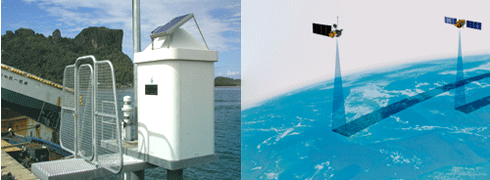
|
Published:
Where to next for regional climate change science?
Australasia’s key forum for scientists to discuss climate change science, impacts and adaptation was held in Perth earlier this year. Dr Bruce Mapstone, Director of the Centre for Australian Weather and Climate Research, reflects on Greenhouse 2009, the 5th conference in the ‘Greenhouse’ biennial series.
Hard on the heels of some sobering updates from the International Scientific Congress on Climate Change conference in Copenhagen on 10 March, more than 500 delegates from government, industry and science met in Perth to absorb the latest updates in Australian climate change science and opinion.
The conference reflected some of the key changes around both the science and perception of climate change since Greenhouse 2007, and the challenges we should tackle before Greenhouse 2011.
First, many of the metrics by which we measure modern climate change are tracking at – or above – the worst-case scenarios considered possible just a couple of years ago. Atmospheric greenhouse gas concentrations, global temperatures and sea-level rise, for example, all exceed what was predicted for them this decade.
They are also projected to increase more rapidly than was anticipated in the IPCC Fourth Assessment Report, released just two years ago. As was reported from Copenhagen, all the empirical signals now indicate that trends in our climate, over and above the year-to-year fluctuations, are close to – or above – the worst-case scenarios predicted previously in the IPCC reports.
Although there remain gaps in our knowledge, we are confident about these statements because of efforts over recent years to build an expanding array of observations of our environment.
We have seen governments in Australia and internationally fund research and development into climate change mitigation strategies and adaptation measures. This funding shows recognition of the importance of the climate change phenomenon. Indeed, at Greenhouse 2009, the Minister for Climate Change, the Honorable Senator Penny Wong, announced a major research initiative to assist our Pacific neighbours respond to climate change – the $20 million Pacific Climate Change Science Program.
Unlike previous changes in climate, modern climate change is occurring in the context of a vast human population living basically sedentary lives and relying on agriculture and built infrastructure for survival. For example, around 150 million people live in permanent settlements within one metre of current sea level.
It is difficult for us to design effective adaptation or mitigation strategies if we have only a poor understanding of the specific changes we face, and when and where we will face them.
As we continue to load up the atmosphere with greenhouse gases, we need to strengthen our research efforts to understand climate fundamentals such as the El Niño–Southern Oscillation (ENSO) to better project future climate dynamics.
There remain significant challenges in downscaling climate projections to those scales in space and time where people most want advice from science. As several speakers noted, we cannot expect to completely remove the uncertainties in climate projections, but we should work to better resolve some of those uncertainties that will most affect our forecasts of future climate. This will require enhanced efforts in both observational and climate modelling research, and ongoing investment in research infrastructure.
As a science community, we continue to tell people about changes in global average temperature or sea-level rise over the next 100 years, but those metrics don’t connect with the information people need to make decisions locally over the next one to two decades. Owners of coastal infrastructure want to know how often key facilities will be inundated by the sea over the next few decades, not in 2100. These inundations are products of extreme events – not just the incremental elevation in average sea level.
Conferences such as Greenhouse 2009 help Australia’s scientific community monitor whether we are on the right path to effectively tackle all these challenges.
More information:
Greenhouse 2009, www.greenhouse2009.com


